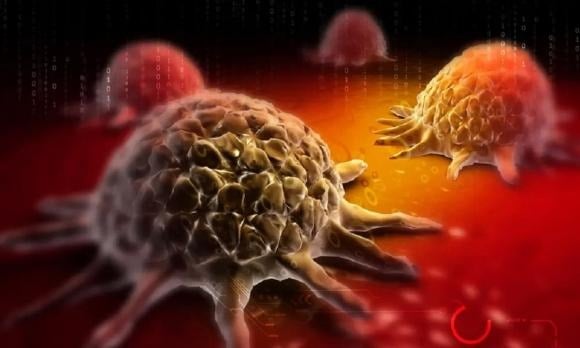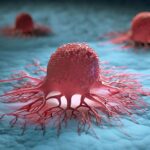Many people have wondered: Why do some individuals who appear to be in good health quickly deteriorate and even pass away shortly after being diagnosed with cancer?
In reality, this scenario is not uncommon and accurately reflects the progression of cancer in many patients. Prior to their diagnosis, they led normal lives, maintaining a cheerful and optimistic outlook, with no apparent symptoms. Despite the presence of tumors in their bodies, their physical condition remained relatively stable.
However, everything changed drastically from the moment they received the “cancer” verdict. Regardless of their strength and resilience, it was difficult to avoid a downward spiral, both physically and mentally. The changes were so evident that they could be seen with the naked eye: hair loss, hollow cheeks, and a gradual weakening of the body until they could no longer stand firmly.
Why do some people die soon after being diagnosed with cancer?
1. Late-Stage Discovery
Most types of cancer develop silently and exhibit no obvious symptoms in their early stages, making early detection extremely challenging. Many individuals only discover they have cancer when the tumor has reached an advanced stage and spread extensively, rendering treatment less effective.
A classic example is pancreatic cancer – dubbed the “king of cancers” due to its uniquely challenging location and initially vague symptoms. By the time of diagnosis, the majority of patients are in the terminal stage, and the cancer cells have already metastasized to other organs.
Therefore, if you notice any unusual signs, such as rapid and unexplained weight loss, prolonged fever, persistent pain, or declining bodily functions, don’t hesitate to seek medical attention promptly.

2. High Malignancy and Rapid Progression
Certain types of cancer, such as pancreatic, liver, bile duct, and small cell lung cancer, grow extremely fast and are highly invasive. Despite modern medicine’s array of treatment options, including chemotherapy, radiation therapy, and targeted therapy, the effectiveness of these treatments is still very limited for these highly malignant cancers, and the survival rates remain low.
For instance, with pancreatic cancer, over 50% of patients succumb within six months of diagnosis.
3. Severe Mental Trauma
Upon hearing the diagnosis of “cancer,” numerous individuals experience severe psychological shock. The perception of cancer as a death sentence can easily plunge them into depression, anxiety, insomnia, and rapid mental decline. This mental distress leads to a decline in physical condition, hindering the effectiveness of treatment. In many cases, it is the despair that exacerbates the severity of the disease.
4. Genetic Mutations and Drug Resistance
Cancer is a disease associated with genetic disorders. Cancer cells can mutate and continuously “evolve,” developing resistance to targeted or chemotherapeutic drugs. When cancer cells become resistant, treatment efficacy diminishes significantly, and the disease progresses rapidly.

5. Underlying Health Conditions
Many cancer patients already have underlying health issues such as diabetes, hypertension, or cardiovascular disease. Treating cancer with chemotherapy or radiation therapy places additional strain on the body. If the patient’s overall health is not robust, they may succumb to a state of exhaustion and be unable to withstand the rigorous treatment process.
6. Emergent Tumor Complications
Cancer not only silently “eats away” at the body but can also cause sudden and life-threatening complications. For example:
-
Colorectal cancer can lead to perforation of the digestive tract.
-
Liver cancer or large tumors can rupture, causing internal bleeding.
-
Lung cancer can result in massive hemoptysis, obstructing the airways and leading to death within minutes.
“Golden Standard” in Cancer Screening: Recommended Methods for Early Detection
Early detection of cancer plays a crucial role in improving treatment outcomes and increasing survival rates. The following are considered gold standard screening methods for common types of cancer, especially for individuals in high-risk groups.
Gastric Cancer: Gastroscopy combined with biopsy is the primary method for diagnosing and preventing gastric cancer. It is one of the few cancers that can be effectively prevented if detected early through regular endoscopies.
Lung Cancer: Low-dose spiral CT scanning is considered the optimal choice for lung cancer screening. According to the “Guidelines for Screening and Prevention of Common Malignant Tumors in the Population,” individuals at high risk of lung cancer should undergo this procedure to detect lesions promptly.
Colorectal Cancer: Colonoscopy is the gold standard for screening colorectal cancer. Individuals should start screening at the age of 45, combining annual fecal occult blood testing and colonoscopy every ten years until the age of 75.
Liver Cancer: Liver cancer screening should be performed by combining alpha-fetoprotein testing and liver ultrasound. For high-risk groups, doctors recommend screening every six months.
Cervical Cancer: Most cases of cervical cancer are associated with high-risk HPV infections. Therefore, screening through a combination of HPV testing and cervical cytology is considered the most effective method and is widely applied globally.
Breast Cancer: This is one of the most common cancers among women. For those at high risk, screening should commence at the age of 25. Mammography or breast ultrasound are the preferred methods for early detection of lesions.
Esophageal Cancer: Average-risk individuals should start esophageal cancer screening at the age of 55, while those with higher risk factors (such as smoking, alcohol consumption, or gastroesophageal reflux disease) should begin at 40. Gastroscopy is the chosen method to detect early lesions in the esophagus.
Prostate Cancer: Men over 50 should undergo regular prostate cancer screening. Testing for prostate-specific antigen (PSA) is a simple, sensitive, and convenient method to detect this disease early.
Taking the initiative to undergo regular health screenings and check-ups can lead to the early detection of cancer, increasing the chances of successful treatment and prolonging life expectancy. Individuals, especially those in high-risk groups, should proactively undergo these screening methods as recommended by specialist physicians.






































